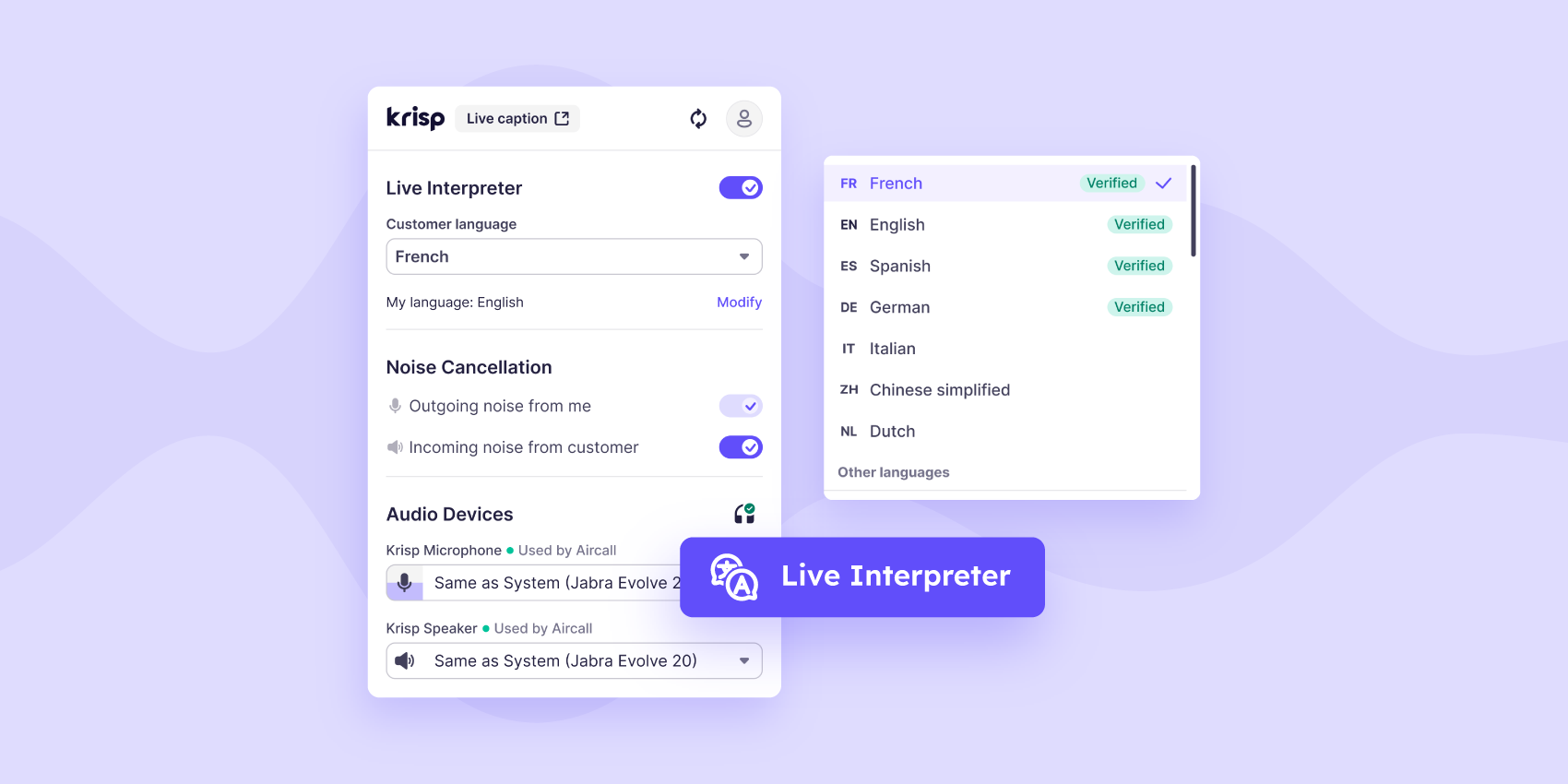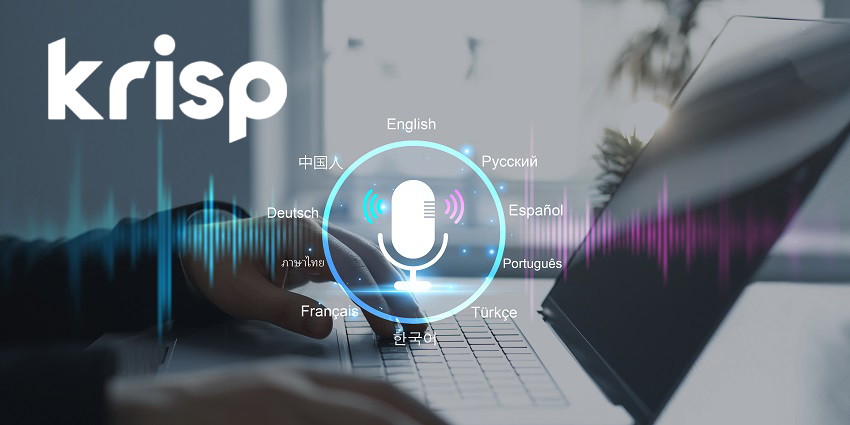In today’s globalized world, seamless multilingual communication is a crucial component of providing excellent customer service.
With businesses expanding internationally and serving diverse populations, language barriers lead to inefficiencies and customer frustrations.
Customers need the ability to communicate in their native language, and contact centers must find effective solutions to meet this demand.
That’s where Krisp comes in.
With a strong background in leveraging AI to boost productivity across contact centers and BPOs, Krisp recently launched the industry’s first AI live interpretation solution, offering real-time, bi-directional translation.
Krisp’s AI Live Interpreter provides real-time speech-to-speech translation that removes language barriers in contact centers.
With 29 out-of-the-box languages currently supported and more available on demand, the tool provides instant, accurate, and secure bidirectional translation for improved customer service.
In discussing why the company chose to develop the tool, Anthony Canoso, Head of Customer Experience at Krisp, explained how it married well with the vendor’s core strengths:
“Our expertise as a company is building AI models that tap and affect audio in real-time.”
So, let’s take a closer look at how these AI models work.
How AI-Driven Live Interpretation Technology is Transforming Real-Time Interactions
The use of AI in contact centers is nothing new, but its application in real-time interpretation is a far more recent phenomenon.
Traditionally, multilingual support involved either human interpreters or automated systems that often failed to meet the speed and accuracy required in a high-pressure customer service environment.
However, the rise of AI-driven live interpretation offers a much-needed solution.
AI-powered live interpreters use cutting-edge technology to understand and translate customer speech in real time.
As Canoso explains, the live interpreter system processes audio in real time, ensuring smooth, fast exchanges, without the lag time associated with traditional translation methods.
How Live Interpreter Works
At the core of the Live Interpreter solution is a combination of AI, natural language processing (NLP), and sophisticated software architecture that ensures the seamless delivery of translations.
AI plays a critical role in enhancing the speed and accuracy of the interpretation. By leveraging machine learning, the system continuously improves its ability to understand and translate language, even in complex contexts.
Additionally, noise cancellation technology plays a vital role in maintaining clarity and translation accuracy.
Whether it’s background noise in a call center or external distractions for remote workers like traffic and sirens, noise and voice cancellation is essential.

Krisp deploys AI-powered tech to block out noise and deliver clean, accurate, and clear communications for both the agent and the customer, as Canoso explains:
“Everything we do comes with our world class noise and voice cancellation, which is bidirectional; not just from the agent side, but from the customer side as well.”
Enhancing CX with AI-Powered Interpretation
As discussed above, AI-driven live interpretation can eliminate language barriers in real time.
This means that customers no longer have to wait for a human interpreter, often a third party, to join the call and begin translating, significantly speeding up the interaction.
AI-driven interpretation also reduces the time needed for back-and-forth communication and removes the risk of misunderstandings that can arise from human translators.
As you can imagine, this is particularly effective in a contact center environment, where reducing wait times means enhanced efficiency.
Another area in which the Live Interpreter delivers is what Canoso refers to as “pocket languages.”
“Nuanced languages can be more expensive and more difficult to staff and maintain,” he explains.
“So, it’s a great fit for those environments as well because it really enables any agent to take and support calls in any language.”
Security, Compliance, and Scalability
As with any customer-facing technology, live interpretation must meet stringent enterprise security standards.
According to Canoso, the Live Interpreter solution complies with security regulations such as PCI, HIPAA, and GDPR.
“Everything that we do is fully secure and compliant…we don’t record or store audio on the device,” he explains.
Moreover, scalability is crucial in the enterprise environment.
Krisp’s AI-driven Live Interpreter is built to scale effortlessly to accommodate large volumes of customer interactions,which separates it from most existing offerings in the space, as Canoso explains:
“We have advanced scripting and enterprise scalability that helps IT teams push [Live Interpreter] out with ease.”
The Head of CX also confirmed that the tool supports Single Sign-On (SSO), SCIM, and Active Directory integration.
This enables businesses to easily manage user onboarding and offboarding, making the solution flexible for enterprises of any size.
To find out more about Krisp’s Live Interpreter, you can watch a demo with the company’s CEO, Davit Baghdasaryan, here, as well as listen to more insights from Anthony Canoso here.
For additional information about Krisp’s full suite of AI-powered solutions, visit the website today.







